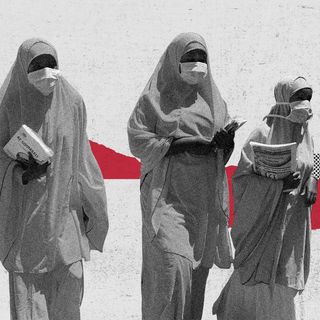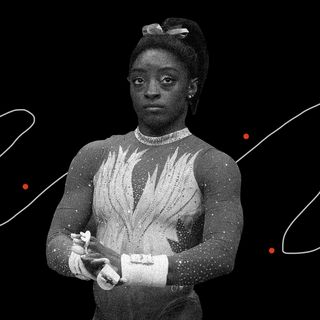
Hindutva Extremists Are Attacking Anti‑Caste Music in Punjab. The Hate Is Not New.
Punjab’s musicians have a history of critiquing religious and caste hierarchies.

“Gareebde di shoh maadi, gau da moot shudh aa… Je main maade ghar jameya te mera ki kasoor aa?” (“You think being touched by a poor person [alluding to Dalits] is lowly but cow urine is pure… How is it my fault that I was born in an inferior home?”)
These are among the lines that drew Hindu right-wing political workers in Punjab against the song “Mera ki Kasoor” (“What Is My Fault?”) and its singer Ranjit Bawa. Through its lyrics and video, the song calls out caste and religion for discrimination against Dalits and religious minorities.
Sung from a Dalit person’s point of view, the song’s references cover a range of discrimination — from the caste segregation in gurudwaras (of supposedly egalitarian Sikhism), empty religious symbolism across religions, to casteist resource monopolization. For this, Bawa was swamped with hate, threats, and police complaints. He was ultimately forced to remove his song from YouTube with an apology.
Bir Singh, the lyricist of “Mera ki Kasoor,” says that his lyrics don’t single out any religion. With an awareness of his privileged Jatt Sikh identity — the land-owning dominant caste and most sizeable religious community in Punjab — he said that the lyrics are based on the discrimination against Dalits he witnessed while growing up. “Social discrimination issues are never talked on-screen because we’ve been impressed with fear of government and policing agencies,” he adds.
In stifling the artist’s expression, the opportunity for critiquing their cultural product is lost, thinks Neetu Arora, feminist educationist and Punjabi professor at University College, Bhatinda. In the context of Bawa’s song, she says, nuances are missed. For example, referring to Dalits as “maada” or inferior, “…whether in terms of money or caste status is problematic.”
“Tera Na Kasoor Teri Soch da Kasoor Hai” (“It’s Not Your Fault; It’s Your Thoughts”), sang Punjabi pop singer Brawy Maan in solidarity with Bawa. For this, she received a police complaint as well as abuse and sexual harassment on social media, largely by dominant-caste Hindu men. Avtar Deepak too sang in solidarity, immediately leading to another police complaint being filed against him. Worryingly, that is three artists who were stifled within the span of a few weeks for expressing anti-caste sentiment.
Assault on such caste and religious condemnation through music isn’t new in Punjab. Dalit pop singer Roop Lal Dhir, who claims to be the first to record Ambedkarite pop-music in Punjabi in 1986, recalls the backlash: “We were given a court notice for singing about Babasaheb [Ambedkar] and against Brahmanvaad, Manuvaad.” Dhir adds that he would receive threat calls every time he released such songs. “When you talk of revolutionary things to the new generation, opposition is natural,” he said.
Earlier this decade, Rajni Thakkarwal was physically attacked by a group of Jatt boys during a performance in Phagwara to prevent her from singing chamaar-pop songs. (“Chamaar-pop” turns the caste name — often used as a slur by dominant caste people — into pride-filled identity assertion.)
“More the assertion by the lower castes against caste oppression, more the resistance, conflict, court cases by the higher castes,” says Ronki Ram, Shaheed Bhagat Singh Chair Professor at Panjab University.
Related on The Swaddle:
How Mainstream Punjabi Music Strips Women of Consumer Power, Agency
The state, at 31.9%, has the highest proportion of Dalits in its population, nearly double the national average. However, Dalits hold only 5.7% of operational agricultural land holdings. This has led to a seething land-rights movement, supported by artists in the region.
One such example from Malwa region is the music of Bant Singh – Dalit farmer, fiery singer, and political activist — which is emblematic of the upper-caste attacks on Dalit political and cultural assertion. He sang the revolutionary poetry of Sant Ram Udasi from a young age. To silence his activism, Jatt land-owners gang-raped his minor daughter. When he secured a conviction against them, Jatt men from his village battered his limbs, ultimately leading to amputations. Singh continues to be a singer-activist, now known by the sobriquet “Singing Torso.”
Along with singing caste-assertion and Ambekarite songs, Dalit pop artists also identify as “devotional singers,” performing at deras or shrines. Deras, socio-spiritual places mostly sought by disadvantaged castes, were traditionally syncretic spaces whose numbers grew in the latter half of the 20th century. Most of the thousands of deras in Punjab are now caste-based.
“Deras are linked to caste and you’ll find pop singers of different castes there,” said Jalandhar-based author and columnist Desraj Kali. The artists, therefore, use these spaces to link their caste-assertion to their unique religious and social groups.
“Even before these [pop] songs, the leaders of the Ad-Dharm movement of 1920s Punjab were poets who would sing their radical poetry,” explains Ram. Punjab’s Dalits, chiefly from the Chamaar community in Doaba, used the Ad-Dharm movement to self-identify with this new religion and reject discriminatory mainstream religions.
Religion has repeatedly been used as a vehicle for caste mobility in Punjab, leading to the creation of competing caste hierarchies among different religions. For instance, Jatts – who were in Shudra category according to the Hindu varna system – sought the then-new religion of Sikhism for social mobility once they had economic power. This intersection of novel religions, caste assertion, and mobility is notable in understanding why anti-caste music in Punjab gets a violent response from religious and caste groups.
“It has been observed that the status of the Hindu Jats in Jalandhar and Hoshiarpur Districts was lower than that of their Sikh counterparts,” writes sociologist Paramjit S Judge based on the 1931 Census.
Recently, Ad-Dharm and dera sects have sought to replicate this. This subtext is visible in recent Dalit pop music videos that feature flashy displays of masculinity and wealth (courtesy of remittances from Punjabi Dalit emigres in Europe and West Asia), just as Jatt pop videos do while asserting their caste identity.
Author Kali holds the present political scene responsible for the latest reprisal against such religious and caste condemnation. “You’ll find that the most voluminous criticism exists on Hindu philosophy, but now criticism won’t be tolerated because this is the era of intolerance.”
Akshita Nagpal is an independent multimedia journalist whose writings on migration, food politics, sexuality, and governance have appeared in Al Jazeera, VICE India, The Hindu, and IndiaSpend, among others. Her documentary film ‘An Unlikely Match’ played on NDTV 24x7. Along with English, she plans to report in Urdu and Persian, languages that she’s teaching herself. She tweets at @AkshitaNagpal.
Related


2 Million Girls Worldwide Are at Risk of Undergoing FGM During Pandemic: UNFPA
